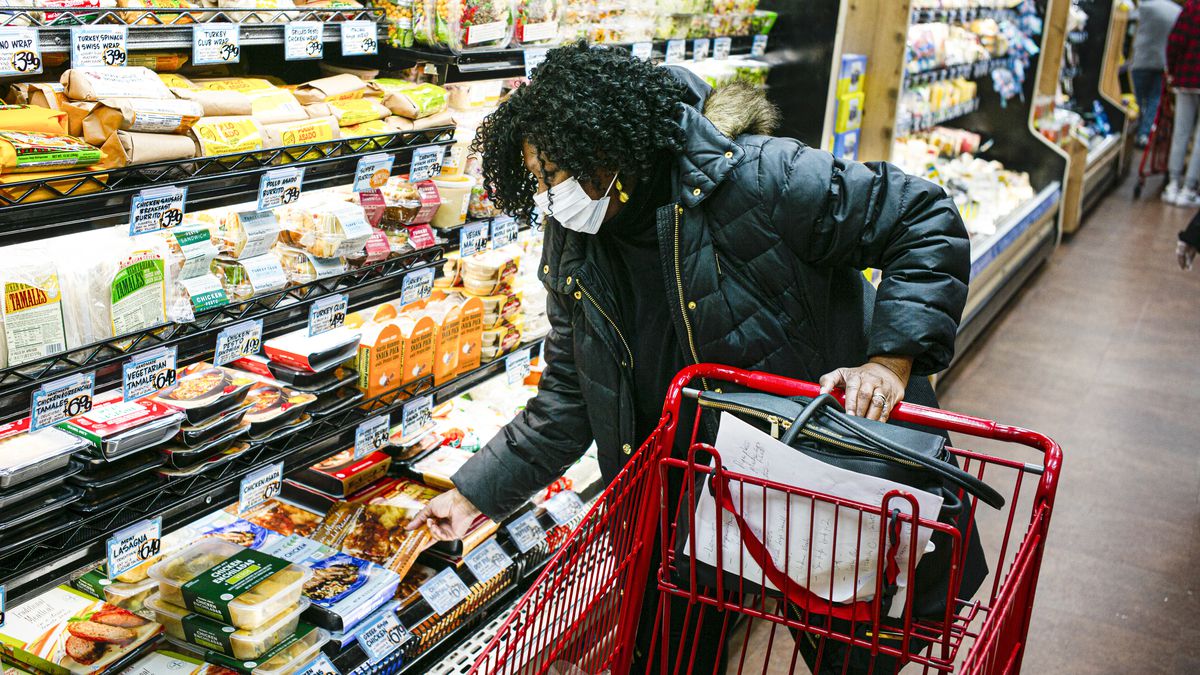What’s your real risk of exposure to COVID-19 at the grocery store?

A trip to the grocery used to be routine. Now it’s a real challenge. How long will you wait in line? Will the store have the items you need? And is it risky to handle all those groceries amid the novel coronavirus pandemic?
Grocery stores are imposing more and more safety rules — metering customers, requiring masks. But is there COVID-19 virus on that cereal box? And what if someone sneezed in the produce aisle?
It’s a “new normal” day at the grocery store. Shoppers waiting six feet apart. Faces covered in masks. Carts getting cleaned after every use.
All to stop a potential coronavirus attack. But what about all those groceries inside? Can the virus live on those boxes and cans? What about shoppers handling the fresh fruits and veggies?
We posed the questions to James Rogers, food safety expert at Consumer Reports.
“I’m sure there are researchers that are looking at whether people coughing on fruits or vegetables that the droplets would carry viable virus,” he said.
Rogers says research is just “beginning” — but so far no known COVID-19 cases are linked to groceries.
“All I can say is what I have seen from our federal regulatory agencies such as FDA or CDC that have indicated they have no evidence to suggest people are picking up this virus from packaging and getting sick. The belief tends to be that for that to happen, you have to have a perfect sequence of events,” Rogers said.
Many hands may touch packages, and fresh produce, even before it gets to the store. Then it’s stocked on shelves, picked up and put back by shoppers. So what if someone along the line was ‘infected?’
“We have to wait for the research to be done to give us the data on this as to how long this virus can last on surfaces found in stores,” said Rogers.
However, he says, it seems unlikely that groceries could carry enough virus to make you sick — even if someone sneezed on that pile of fruit.
“You would have to touch that virus right where the virus is, there would have to be enough virus there in that spot you touched,” Rogers said. “Then you would have to transfer it to your face to your mouth by your hands and then come down with the virus. Right now with the data we have, it’s not a likely scenario,” he said.
Well “that’s” a relief. However, he says, it can’t hurt to wipe down your groceries when you get home. He does it “himself.”
“My wife is making us wipe any item that comes in from the outside down with disinfectant wipes… if I’m home i’m right there doing it with her,” he said.
Here’s his advice:
For packaged goods, pour the contents into your “own containers” and throw out the package.
Scrub produce in plenty of “cold” water.
Cook foods to at least 160 degrees to kill any virus
Although risk “appears” low, the virus is still a mystery.
“It’s a big well of unknown-ness about this whole situation. All we can do is deal with it day by day, keep each other informed as best as we can,” Rogers said.
And he says the biggest risk of grocery shopping is the trip to the store itself — and possible contact with other shoppers. If you can, he says, try to get groceries delivered.

